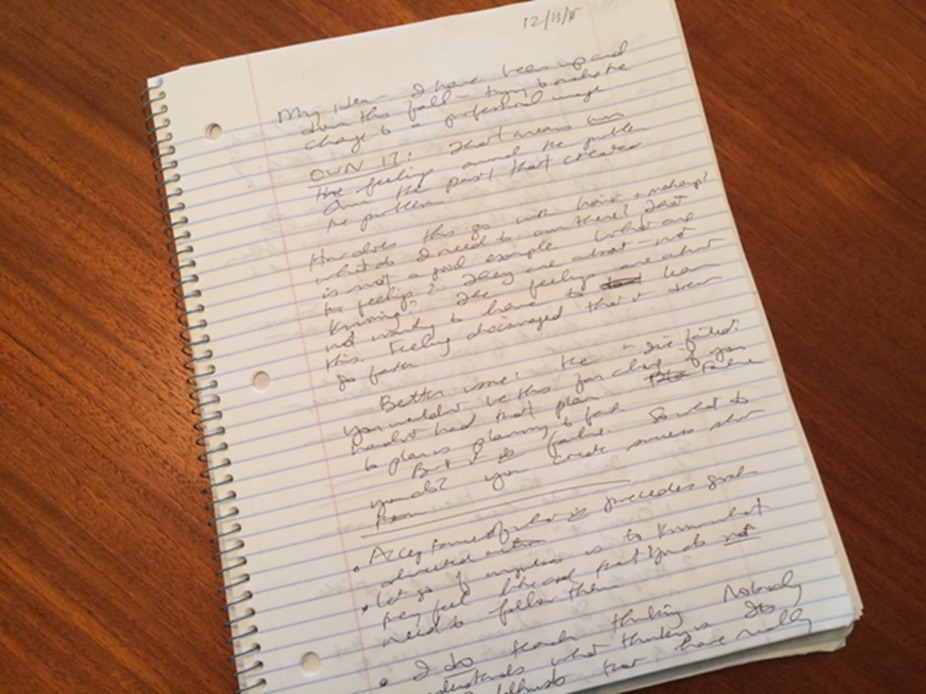If you’ve followed my work, you know I’m an advocate of “Thinking on Paper.” You can watch this 3-minute video explaining “thinking on paper, or read a short write-up on it here.
People often ask when they should use “thinking on paper” to speed up their thinking. Like physical leverage, mental leverage entails a tradeoff. When you “think on paper,” you slow down the steps you take; it’s only worth using the tactic if you speed up getting results. How can you be sure that it will pay off?
In the past, I’ve given a qualitative answer. “Think on paper” whenever the task seems hard, or you feel like you’re bogging down, or the topic is important and you want to do your best thinking. But on reflection, I’ve come up with a quantitative answer: the “One–Minute Rule” for “Thinking on Paper.”
If you have spent one minute in indecision, puzzlement, conflict, or any other thinking quandary, then “thinking on paper” is warranted. This means that even apparently trivial questions–like what should I work on first? Or should I stop for lunch now? Can warrant “thinking on paper.”
Why the one–minute rule? There is a cadence to thinking–each question/answer cycle is a few seconds. When thinking is going smoothly, you have an experience of constant forward progress accompanied by a rhythm of thoughts. If you’ve gone a minute and you’re not in a rhythm, you need a little leverage.
The very first step of “thinking on paper” is to write down your thinking goal–the question you are trying to answer. That simple act of clarification and commitment is often all you need to streamline your thoughts. It takes 10 seconds to write it out. If you’ve lost a minute, or can see yourself losing a minute, it is 10 seconds well spent.
And if writing down the thinking goal is not enough, you could lose much more than a minute. Because when you’re in a quandary, you are at great risk of distraction. Most things are more pleasant than an experience of uncertainty and confusion. If you don’t focus your attention quickly, the next stray excuse is likely to tempt you off topic. But if you turn to “thinking on paper,” that process will draw you in, help you tune out distractions, and get you through the danger zone.
As I say in the video, I’m on a mission to teach the whole world “thinking on paper.” It is the #1 general purpose thinking tactic to use. Use it at the first sign of trouble. If you haven’t test driven this important tactic, check out the video, and try it yourself.
I’m also on a mission to encourage people to use it more often. The next time “I don’t know” occurs to you, try “thinking on paper.” You may know more than you think you know.









Good post, Jean. I cannot agree with you more.
What do you think about a slight addition to the same process?
I like thinking on paper and find that it clears up some confusion or uncertainty that I have about how I will get to my near term goal. But once I am done with the thinking on paper and back to my original train of thought, I sometimes lose what it was I learned by thinking on paper. So I have added the step of writing down the results of my thinking on paper where it is easy to see.
I have a whitewall, which is one complete wall of my office I turned into a whiteboard by applying special paint made for this purpose. Then if my original train of thought is derailed again, I just glance up at the whitewall to remember what I learned.
I find this helpful when the results of thinking on paper are a series of steps that cover everything I need to do to reach my near term goal. Sort of a high level overview or an outline of the thinking I need to do.
Thanks, Daniel.
I agree that isolating your conclusions and writing them down where you can see them is helpful. This is similar to “Mental Cleanup Time,” which I discuss in another article:
http://www.thinkingdirections.com/Tips23MentalCleanup.htm
The process you suggest would be particularly helpful when you have a very complex project, and have to think about one piece at a time.
Many times “thinking on paper” is on a smaller / easier topic, and then you would have no need for this additional step.